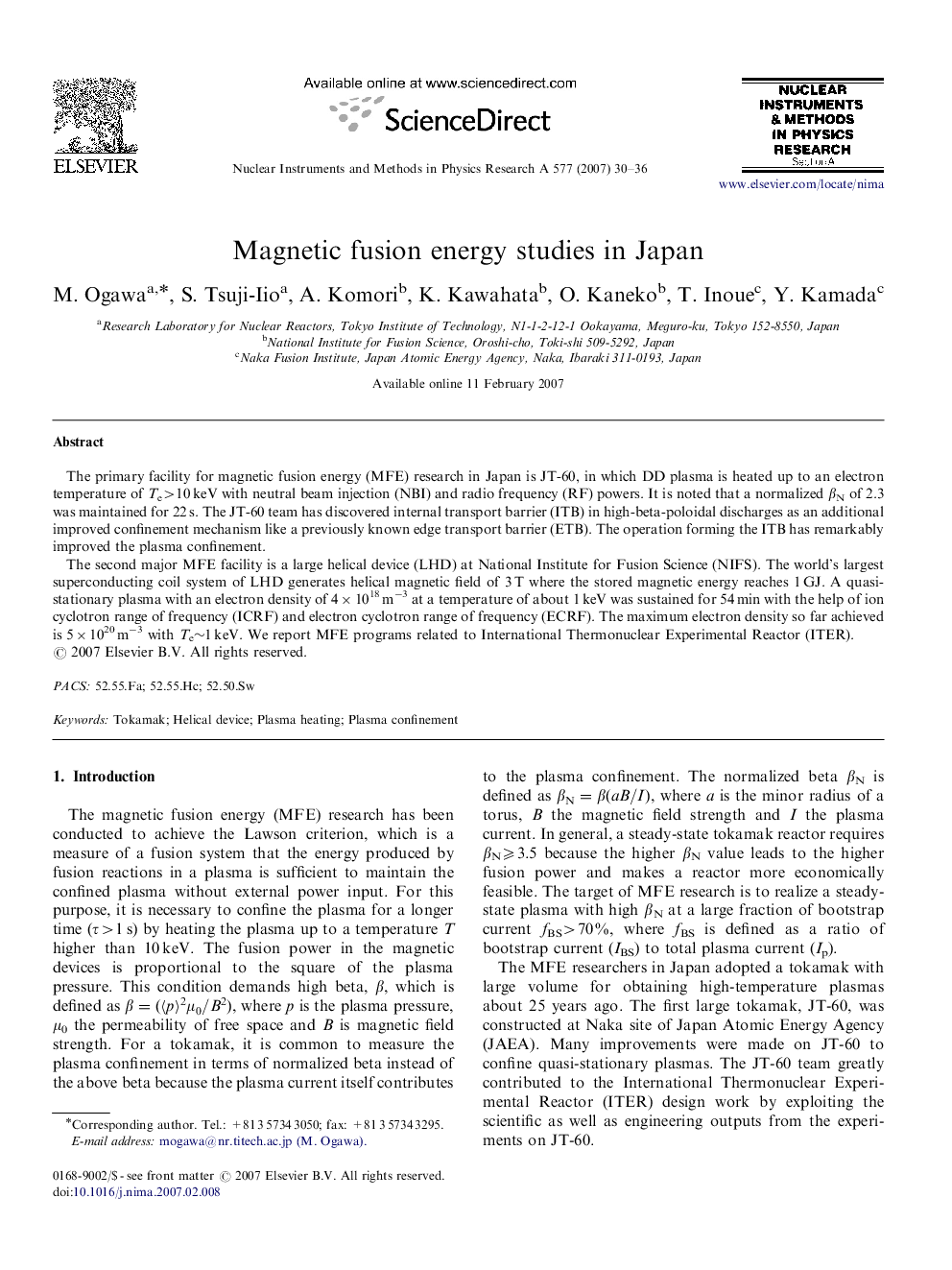| Article ID | Journal | Published Year | Pages | File Type |
|---|---|---|---|---|
| 1830589 | Nuclear Instruments and Methods in Physics Research Section A: Accelerators, Spectrometers, Detectors and Associated Equipment | 2007 | 7 Pages |
The primary facility for magnetic fusion energy (MFE) research in Japan is JT-60, in which DD plasma is heated up to an electron temperature of Te>10 keV with neutral beam injection (NBI) and radio frequency (RF) powers. It is noted that a normalized βN of 2.3 was maintained for 22 s. The JT-60 team has discovered internal transport barrier (ITB) in high-beta-poloidal discharges as an additional improved confinement mechanism like a previously known edge transport barrier (ETB). The operation forming the ITB has remarkably improved the plasma confinement.The second major MFE facility is a large helical device (LHD) at National Institute for Fusion Science (NIFS). The world's largest superconducting coil system of LHD generates helical magnetic field of 3 T where the stored magnetic energy reaches 1 GJ. A quasi-stationary plasma with an electron density of 4×1018 m−3 at a temperature of about 1 keV was sustained for 54 min with the help of ion cyclotron range of frequency (ICRF) and electron cyclotron range of frequency (ECRF). The maximum electron density so far achieved is 5×1020 m−3 with Te∼1 keV. We report MFE programs related to International Thermonuclear Experimental Reactor (ITER).
